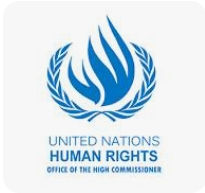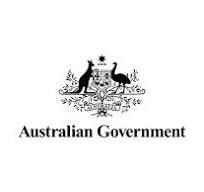Office of the High Commissioner, United Nations
- agentorangechild
- May 8
- 7 min read
Updated: May 11

Facts: Facts of the Complaint and Nature of the Alleged Violations
I am submitting this complaint as a second-generation victim of TCDD (dioxin) exposure, a known human carcinogen and reproductive toxin used in the herbicide Agent Orange during the Vietnam War. My parent served in the Australian Defence Force and was deployed to Vietnam from 17 December 1969 to 7 December 1970, during which time he was exposed to Agent Orange.
I was born in 1974, and I now suffer from 17 serious medical conditions, some of which were present from birth and are consistent with international findings of intergenerational harm caused by TCDD exposure. Despite a growing body of scientific, medical, and legal evidence globally (including recognition by the United States, South Korea, and Canada of second-generation effects), the Australian Government continues to deny the existence of harm to the children of veterans.
This includes:
•Denial of recognition of second-generation exposure as a basis for healthcare or support;•Exclusion from disability pensions or services despite clear medical documentation;
•Obstruction of justice by government departments through repeated dismissals of complaints;
•Failure to apply international obligations under the Stockholm Convention on Persistent Organic Pollutants and the Convention on the Rights of Persons with Disabilities (CRPD).
Between 2010 and 2025, I have attempted to obtain disability support through the Department of Veterans’ Affairs (DVA) and Centrelink, but was denied multiple times.
Written complaints to relevant departments — including Health and Human Services — have been either ignored or rejected without proper investigation.
In January 2025, I was diagnosed by medical professionals as having health conditions consistent with second-generation TCDD exposure. Despite this, the Australian Government has refused to acknowledge any duty of care, and has failed to establish any medical monitoring, support, or investigation into intergenerational harm.
I consider this a consistent and gross violation of my fundamental rights, including:
•Right to health and life with dignity (Article 12, ICESCR; Article 6, CRC);
•Right to non-discrimination and equal protection under the law (Article 26, ICCPR);
•Right to remedy for human rights violations (Article 2(3), ICCPR);
•Rights of persons with disabilities (CRPD Articles 1, 4, 7, 25);
•Rights of the child (CRC Articles 3, 24, and 27), as this harm also affects my own children.
This ongoing denial constitutes a pattern of systemic neglect, discrimination, and violation of international human rights standards.
These violations are reliably attested by medical reports, scientific literature, and a consistent failure by the State to respond to decades of advocacy, despite having accepted obligations under binding human rights treaties and environmental conventions.
Further, the Australian Government is acting in clear contradiction to its own obligations under the Stockholm Convention on Persistent Organic Pollutants, which it ratified in 2004.
Under this Convention, the government publicly fined and prosecuted Orica, a private company, for environmental contamination involving TCDD and other hazardous chemicals. These actions were justified on the grounds of protecting both the environment and human health from persistent organic pollutants. Yet, when the same chemical — TCDD — causes harm to the children of veterans, the government refuses to apply those same protections.
The protections enforced under the Stockholm Convention are being selectively used against corporations while the State avoids accountability for harm caused by its own military practices. This double standard reveals a profound hypocrisy and systemic discrimination. Australia cannot claim to uphold international environmental and human rights law while denying protection and justice to individuals affected by its own sanctioned exposures.
I request that this petition be accepted for review under the UN Human Rights Council Complaint Procedure, and that Australia be held accountable for its failure to uphold its international obligations to victims of intergenerational toxic exposure.
Domestic Remedies
Have you exhausted all domestic remedies?: Yes
Details of steps taken to exhaust domestic remedies:
Details on the procedures which have been pursued by or on behalf of the alleged victims, including recourse to the courts and other public authorities as well as national human rights institutions, the claims made, at which times, and what the outcome was.
If domestic remedies have not been exhausted on grounds that their application would be ineffective or unreasonably prolonged, please explain.
1. Actions Taken by Others on My Behalf (1979–Present)
a. Medical Dismissal of Early Harm (1979–1980s) Following my birth, my mother experienced a miscarriage five months after my birth. At that time, Agent Orange was mentioned to her by a health professional as a possible factor. Beyond this, no further discussion or investigation took place.
Throughout my childhood, my complex and overlapping health conditions were treated in isolation, and no medical professionals linked them to my father’s war service, nor allowed any inquiry in that direction.
b. My Father’s Probable Enquiries (1990s–2000s) It is believed that my father, a Vietnam veteran, asked the Department of Veterans’ Affairs about potential impacts of his service on his children’s health. However, like others in his situation, he would have been met with denial and a lack of acknowledgment, as government policy at the time rejected any association between Agent Orange and second-generation harm.
c. Advocacy by Veterans and Their Representatives From the 1980s onward, a number of Vietnam veterans and their advocacy organisations made public and formal representations to the Australian government — including to Senate inquiries, ministers, and the Department of Veterans’ Affairs — to raise concern over health issues experienced by the children of veterans.
These efforts were not personalised or case-specific but were broad attempts to seek recognition for the entire second generation.
As a child of a Vietnam veteran suffering from complex conditions consistent with TCDD exposure, I was one of the unnamed children being spoken for in these efforts.
d. Inclusion in Informal Advocacy and Submissions Over time, we became known within private networks and informal discussions among veterans and second-generation advocates. On at least one occasion, our case was raised by others during discussions with policymakers or in written submissions, though not by name. I was part of a wider cohort of children being represented collectively in calls for health recognition, data collection, or support.
e. Ongoing Government Inaction Despite decades of letters, petitions, veteran-led inquiries, and community efforts, the Australian government has continually refused to investigate or acknowledge second-generation effects of Agent Orange.
Every submission or approach that sought to include children has either been ignored or explicitly excluded from consideration — including in inquiries by the Repatriation Medical Authority and the Specialist Medical Review Council.
2. My Direct Actions (2025) As outlined in detail in the previous section, I took the following steps in 2025:
Lodged claims and complaints with DVA, Centrelink, Health, Human Services, and the Australian Human Rights Commission.
Wrote directly to ministers and departments, which were dismissed or denied.
Initiated contact with international mechanisms, including the UN Committee on the Rights of the Child, UN Special Rapporteurs, and the International Criminal avenues.
The Department of Veterans Affairs has withheld my late father’s health and pension records despite formal requests and I have escalated the matter to the Australian Federal Police the National Anti Corruption Commission. Confirmation is available on my website.
3. Why Domestic Remedies Have Not Been Exhausted
The denial of second-generation harm has been consistent and institutionalised in Australia for more than four decades.
Efforts made by others on my behalf — including veterans, advocates, and family members — have been repeatedly rejected or ignored, leaving no avenue for justice or recognition within the domestic system.
Based on this long-standing pattern, it is clear that pursuing additional domestic remedies would be:
Ineffective, as the government maintains a position of denial; Unreasonably prolonged, given the decades already passed; And would result in further harm and retraumatisation through administrative obstruction.
Details on the procedures which have been pursued by or on behalf of the alleged victims, including recourse to the courts and other public authorities as well as national human rights institutions, the claims made, at which times, and what the outcome was. If domestic remedies have not been exhausted on grounds that their application would be ineffective or unreasonably prolonged, please explain.
1. Domestic Authorities Contacted and Complaints Lodged:
a. Department of Veterans’ Affairs (DVA) – Australia Claim made: In January 2025, I formally raised claims that my 17 medical conditions were consistent with second-generation exposure to TCDD (Agent Orange), linked to my father’s military service in Vietnam (1969–1970).
Request: Recognition of intergenerational harm and eligibility for disability support and related care.
Outcome: The DVA rejected my claim, stating that no recognition exists for second-generation exposure.
No further assessment was offered despite medical evidence, including a written diagnosis confirming TCDD as the likely source of harm.
b. Centrelink and Services Australia Claim made: I applied twice for the Disability Support Pension between 2016 & 2023 referencing medical evidence & my disabilities.
Outcome: Both claims were rejected. I was not granted access to an independent medical examiner or specialist review.
Appeals were delayed or dismissed on technical grounds.
c. Human Services and Department of Health (Australia) Claim made: I submitted formal letters of complaint about systemic medical neglect, absence of recognition for second-generation dioxin-linked conditions, and refusal to investigate patterns of congenital harm.
Outcome: No substantive reply or investigation occurred. My complaint was referred between departments without action.
e. National Human Rights Institutions Australian Human Rights Commission (AHRC): Complaint lodged: April 2025. Alleging discrimination and denial of healthcare access, disability recognition, and intergenerational rights under the CRPD.
Outcome: Case was declined without full investigation, citing “lack of jurisdiction over military-related legacy exposure.”
2. Other Pathways Explored a. Parliamentary and Ministerial Contact Between February and April 2025, I wrote to multiple government ministers and departments (Veterans’ Affairs, Health, Human Services, Prime Minister) outlining my conditions and requesting recognition.
Outcome: Some departments acknowledged receipt but did not provide answers. No action was taken to investigate or resolve my concerns.
b. United Nations and International Bodies CRC Individual Complaint: I submitted a communication to the UN Committee on the Rights of the Child under the Optional Protocol in early 2025. Outcome: The complaint was initially rejected for procedural reasons (criteria not fully addressed).
I am now resubmitting with supporting documentation. UN Special Rapporteurs & ICC: In April 2025, I initiated formal complaints to UN Special Procedures and the International Criminal Court for:
Denial of recognition and care Crimes against humanity through knowing failure to act on intergenerational harm
3. Why Domestic Remedies Have Not Been Exhausted Despite my efforts to pursue every reasonable avenue in Australia, including formal government channels, human rights bodies, and legal complaints:
No mechanism exists in Australian law to recognize or investigate second-generation TCDD exposure. All official bodies denied or dismissed claims, even with medical proof and documented harm.
Appeals processes were procedurally blocked or unreasonably delayed.
As a disabled woman with PTSD, spinal injuries, and limited resources, I was unable to afford legal counsel for judicial review or private litigation.
Conclusion: Domestic remedies are ineffective or unavailable. The system lacks a legal pathway for recognition of second-generation TCDD harm, and pursuing full legal recourse would result in unreasonable delay or denial of justice.



Comments